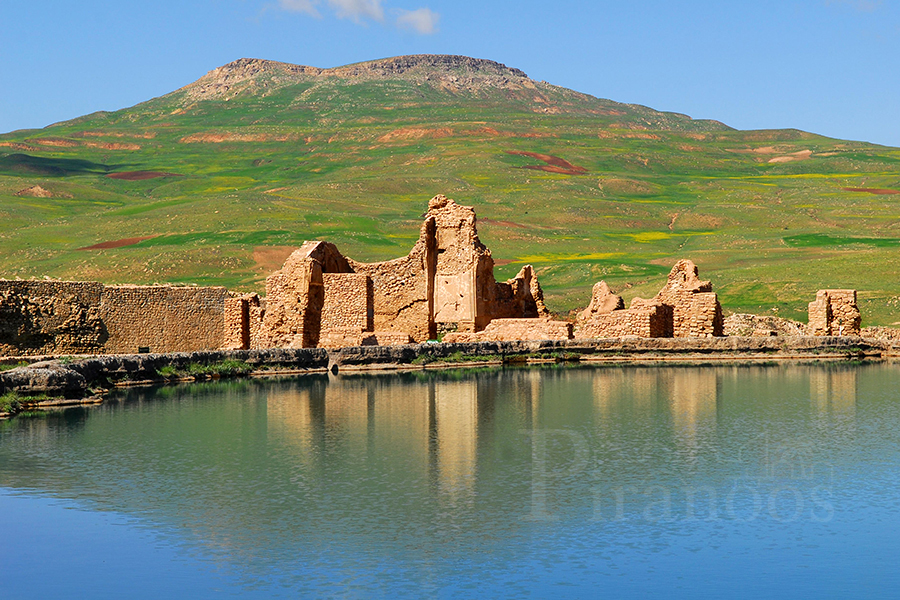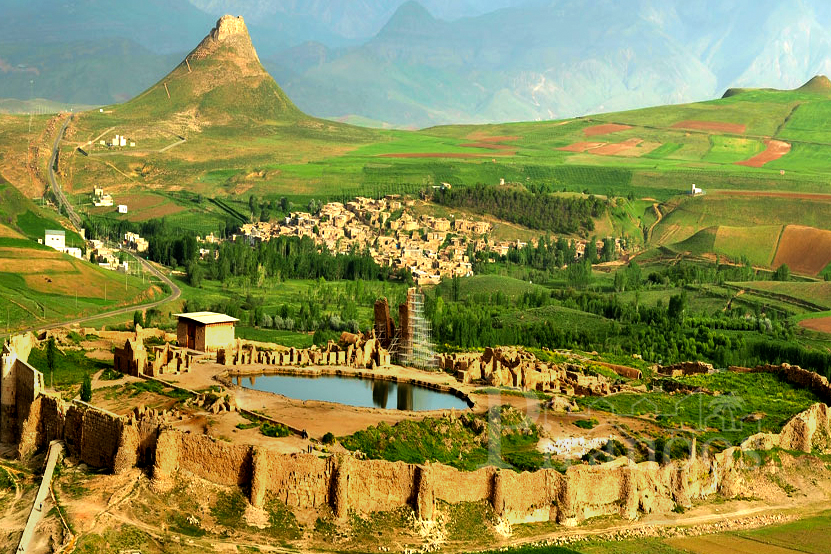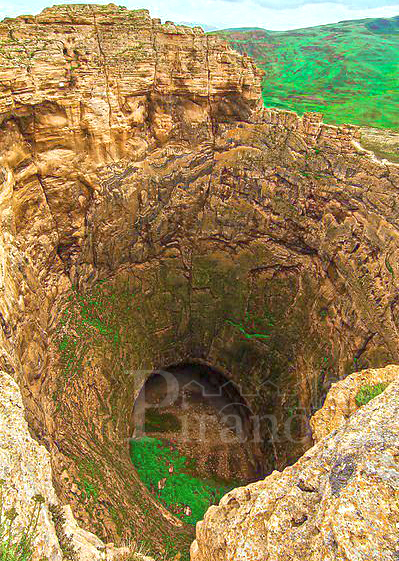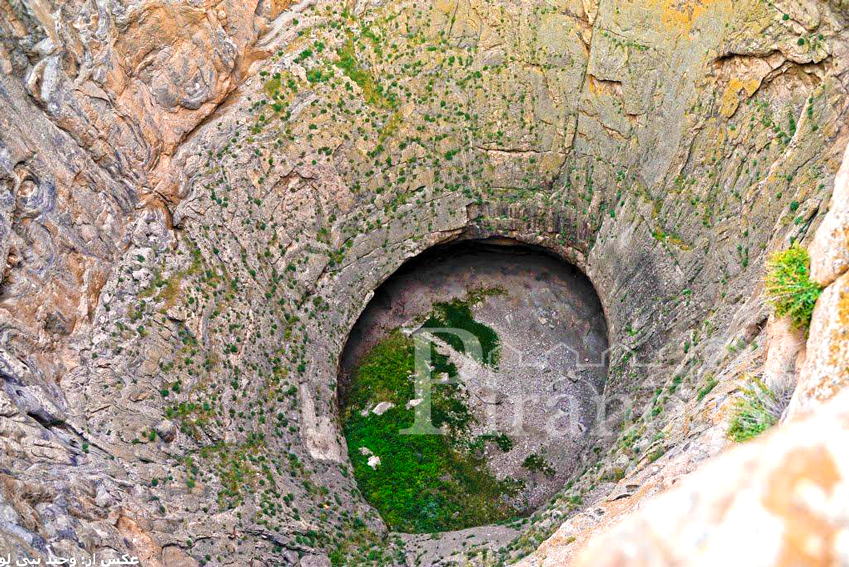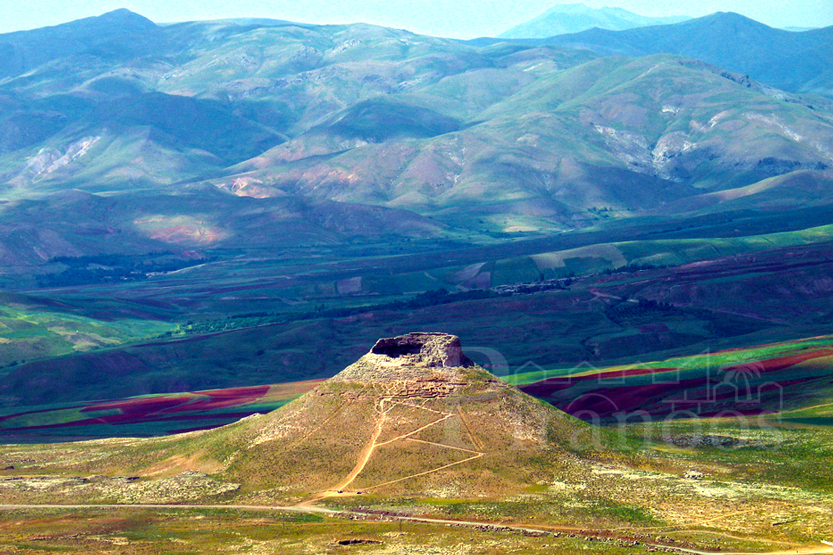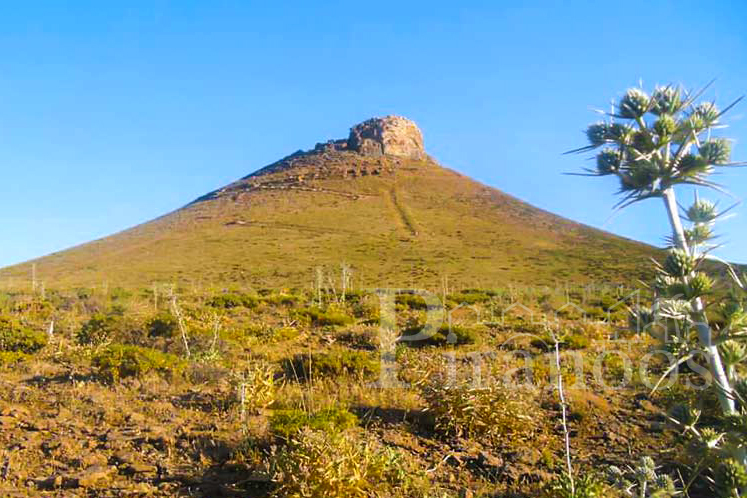Takht-e-Soleyman is the name of a section in the West Azerbaijan province that used to be called “Tazeh kand-e Nosrat” or “Gandomak” in the past. Now the name of this city is Takab.
Takht-e-Soleyman (which means the Throne of Solomon) is one of the three famous Sassanid fire temples (Atash kadeh) and the crowning place of the kings of the Sassanid dynasty. It was probably built during the era of Pirooz, Anushirvan’s grandfather. Although archaeological excavations at Takht-e-Soleyman site have also revealed the antique remains of the Achaemenid and Medes periods, the site is largely owes its fame to Sassanid monuments: Adur Gushnasp Fire temple, Anahita Temple, Gift Museum, Zendan Mountain and Belqeis Fortress. The remains of the only palace left from the Ilkhanid period are another privilege for this historical collection. Takht-e Soleyman is the remnant of the fortress and the great monuments and special buildings for the habitation of the Zoroastrian priests at the time of the Parthians and the Sassanians.

Soleyman Prison or Zendan Mountain is the name of a cone-shaped, hollow mountain located three kilometers west of Takht-e Soleyman. At the top of this mountain are the remains of a sacred temple dating from the first millennium BC that was explored and studied by the German Archaeological Board.
Adur Gushnasp Fire temple in the centuries before the Arab invasion was the most important religious center of the Iran Empire. It was of great importance in matters of faith, religious beliefs, and role in the political and social life of the Sassanids, and was a symbol of the authority of the Sassanid government. Adjacent to this Fire temple in the western part is another complex consisting of a smaller cruciform fireplace and two columned halls with circular and rectangular columns and a number of rooms and side spaces.
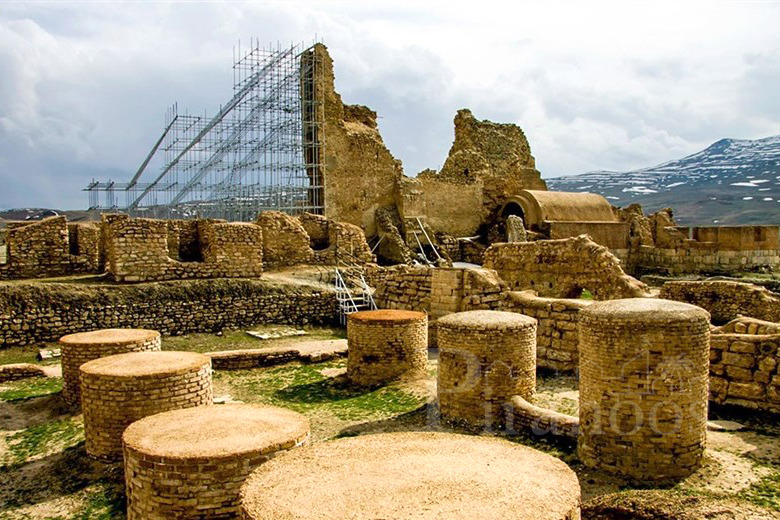
Takht-e Soleyman is believed by many to be the birthplace of Zoroaster, and the construction of the Adur Gushnasp Fire temple in this area as the most important temple revered by Zoroastrian Iranians in the Sassanid era can be a confirmation of this belief. This temple played an important role in the socio-political life of the Sassanids, and its eternal flames of the sacred fire were not extinguished for seven centuries as a symbol of the authority of Zoroastrianism.
On the other hand, it is also believed that the city was the keeping site of the sacred cup of Jesus Christ. The cup is known as the Graal Cup (the same cup that Christ drank from on the last night of his life), but there is still no trace of it in Takht-e Soleyman.
Some locals also consider the city to be the residence of Solomon the Prophet, pointing out that supernatural forces have built such large structures at the behest of Solomon. These are, of course, only the stories and legends of the native people. Legends of the treasure in the deep waters of the lake were also told by the people. It is even said that Solomon’s famous ring is also in this lake.
The secrets and legends of this lake have made it one of the most mysterious places in Iran. The amazing lake with a floating and always lush island is one of the tourist attractions of Takht-e-Soleyman complex, which has made this lake very spectacular. This unique lake is about 20 kilometers away from Takht-e-Soleyman. One of the most unique scenes in the area is that each time the wind blows the island moves forward or backward. Swimming in this lake is strictly forbidden due to the depth of the lake and its sediments.
